
|
It brightened up to 7.1 mag from May to June (June 21, Juan Jose Gonzalez). Now it is fading. But it is bright as 8.8 mag still now (July 20, Chris Wyatt). In the Northern Hemisphere, it will be unobservable in August. In the Southern Hemisphere, it is observable in good condition after this.
Date(TT) R.A. (2000) Decl. Delta r Elong. m1 Best Time(A, h)
July 22 14 18.17 -25 55.4 1.201 1.721 101 8.5 18:39 (151, 80)
July 29 14 23.72 -30 7.8 1.302 1.752 97 8.8 18:43 (111, 79)
|
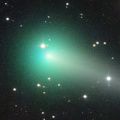
|
Outburst occured on Apr. 4, and it brightened by 2 mag, up to 6.2 mag (Apr. 7, Juan Jose Gonzalez). Now it is fading. But it is bright as 9.6 mag still now (July 5, Chris Wyatt). It stays observable for a long time after this.
Date(TT) R.A. (2000) Decl. Delta r Elong. m1 Best Time(A, h)
July 22 3 11.71 21 56.7 1.645 1.572 67 9.5 5:33 (206, 28)
July 29 3 23.45 22 29.9 1.661 1.652 71 9.8 5:29 (203, 29)
|

|
New bright comet discovered by the All-Sky Automated Survey for Supernovae (ASASSN). Now it is bright as 9.8 mag (July 23, Juan Jose Gonzalez). It is expected to brighten up to 7.5 mag in October. In the Northern Hemisphere, it stays observable in excellent condition for a long time. In the Southern Hemisphere, it is observable in good condition now. But it will be getting lower in September, and it will be unobservable for a long time after October.
Date(TT) R.A. (2000) Decl. Delta r Elong. m1 Best Time(A, h)
July 22 2 37.19 -9 40.4 1.677 1.899 85 10.4 5:33 (214, 61)
July 29 2 48.57 -7 17.5 1.563 1.844 88 10.1 5:29 (207, 60)
|
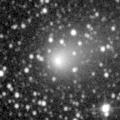
|
Now it is bright as 10.3 mag (July 19, Carlos Labordena). It is observable in excellent condition in the Southern Hemisphere. It locates low in the Northern Hemisphere.
Date(TT) R.A. (2000) Decl. Delta r Elong. m1 Best Time(A, h)
July 22 16 43.35 -36 29.1 0.722 1.600 133 10.5 20:43 ( 0, 88)
July 29 16 52.86 -37 2.9 0.765 1.610 128 10.6 20:25 ( 0, 88)
|
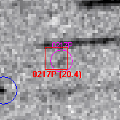
|
Now it is bright as 12.2 mag (July 5, Chris Wyatt). It stays 12 mag until September. In the Southern Hemisphere, it stays at the same altitude in the morning sky. In the Northern Hemisphere, it will be getting higher slowly.
Date(TT) R.A. (2000) Decl. Delta r Elong. m1 Best Time(A, h)
July 22 4 7.96 10 12.5 1.431 1.237 57 12.0 5:33 (227, 32)
July 29 4 33.57 10 55.7 1.436 1.246 58 11.9 5:29 (227, 31)
|
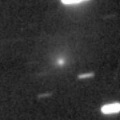
|
Now it is 14.8 mag (July 5, Thomas Lehmann). It will stay bright as 10 mag for a long time from autum to next spring. In the Southern Hemisphere, it stays observable in good condition until next February. In the Northern Hemispehre, it will appear in the morning sky soon. Then it stays observable for a long time until the comet will fade out.
Date(TT) R.A. (2000) Decl. Delta r Elong. m1 Best Time(A, h)
July 22 4 52.74 -5 28.5 4.462 3.949 53 13.2 5:33 (249, 35)
July 29 4 58.83 -5 1.2 4.344 3.899 57 13.1 5:29 (245, 38)
|

|
Now it is bright as 13.3 mag (July 5, Chris Wyatt).
Date(TT) R.A. (2000) Decl. Delta r Elong. m1 Best Time(A, h)
July 22 21 32.28 -13 35.4 4.875 5.830 158 13.2 1:34 (180, 69)
July 29 21 29.24 -13 43.5 4.840 5.829 165 13.2 1:04 (180, 69)
|
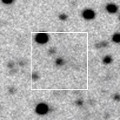
|
Now it is bright as 13.5 mag (July 5, Chris Wyatt). It was expected to brighten up to 12 mag in summer. But actually, it is fainter than expected. It is observable in excellent condition in the Southern Hemisphere. It locates somewhat low in the Northern Hemisphere.
Date(TT) R.A. (2000) Decl. Delta r Elong. m1 Best Time(A, h)
July 22 18 58.12 -29 57.0 1.055 2.045 162 13.8 22:56 (180, 85)
July 29 18 53.43 -29 1.1 1.066 2.033 155 13.6 22:24 (180, 84)
|
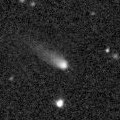
|
Now it is 14.2 mag (July 6, Ken-ichi Kadota). It will brighten up to 13-14 mag and will be observable in good condition in summer.
Date(TT) R.A. (2000) Decl. Delta r Elong. m1 Best Time(A, h)
July 22 23 15.62 13 52.8 2.071 2.748 122 13.8 3:18 (180, 41)
July 29 22 56.05 12 32.5 1.946 2.739 132 13.7 2:31 (180, 42)
|

|
It has not been observed yet in this apparition. The condition of this apparition is worst. It must have brightened up to 10 mag in spring, but it is not observable at all.
Date(TT) R.A. (2000) Decl. Delta r Elong. m1 Best Time(A, h)
July 22 8 1.54 12 6.0 2.606 1.607 8 13.9 5:33 (264,-13)
July 29 8 20.19 10 53.5 2.666 1.668 8 14.3 5:29 (264,-11)
|
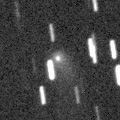
|
Now it is 15.0 mag (July 7, Ken-ichi Kadota). In the Northern Hemisphere, it will brighten up to 14 mag from summer to winter, and it will be observable in excellent condition. It is not observable at all after this in the Southern Hemisphere.
Date(TT) R.A. (2000) Decl. Delta r Elong. m1 Best Time(A, h)
July 22 0 40.92 50 35.3 3.138 3.245 86 14.1 4:42 (180, 4)
July 29 0 37.43 53 36.3 3.059 3.234 90 14.0 4:11 (180, 1)
|

|
Now it is 14.1 mag (June 30, Chris Wyatt). It stays 14 mag from spring to summer. It locates somewhat low in the Northern Hemisphere. The perihelion distance increased from 2.4 a.u. to 2.9 a.u. in this apparition. So it will not be bright as before.
Date(TT) R.A. (2000) Decl. Delta r Elong. m1 Best Time(A, h)
July 22 15 43.40 -22 43.2 2.305 2.943 119 14.2 19:42 (180, 78)
July 29 15 45.22 -23 0.6 2.383 2.938 113 14.3 19:17 (180, 78)
|
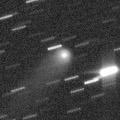
|
Now it is 14.4 mag (July 7, Ken-ichi Kadota). It will be observable at 14 mag for a long time from 2017 to 2018.
Date(TT) R.A. (2000) Decl. Delta r Elong. m1 Best Time(A, h)
July 22 16 55.68 23 41.3 3.622 4.172 116 14.4 20:53 (180, 31)
July 29 16 45.91 23 35.5 3.682 4.145 110 14.5 20:16 (180, 31)
|
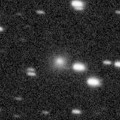
|
Now it is 15.3 mag (July 8, Ken-ichi Kadota). It is expected to brighten up to 9 mag in summer in 2018. In the Northern Hemisphere, it stays observable until 2018 summer while the comet will be brightening. In the Southern Hemisphere, it is hardly observable in 2017, but it will be observable in good condition in 2018.
Date(TT) R.A. (2000) Decl. Delta r Elong. m1 Best Time(A, h)
July 22 17 31.71 49 37.1 4.292 4.615 102 15.3 21:29 (180, 6)
July 29 17 24.19 48 3.9 4.254 4.558 100 15.2 20:54 (180, 7)
|
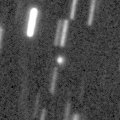
|
Now it is 15.8 mag (July 8, Ken-ichi Kadota). It is expected to brighten up to 11-12 mag from 2018 to 2019. In the Northern Hemisphere, it stays observable in good condition while the comet will be brightening gradually. In the Southern Hemisphere, it is not observable until 2018 October.
Date(TT) R.A. (2000) Decl. Delta r Elong. m1 Best Time(A, h)
July 22 15 34.70 59 59.4 4.481 4.472 82 15.5 19:32 (180, -5)
July 29 15 23.91 59 4.2 4.478 4.421 80 15.4 18:54 (180, -4)
|

|
Now it is 15.6 mag (Mar. 6, Kunihiro Shima). It is appearing in the morning sky. It stays observable at 15.5 mag unil the end of 2017.
Date(TT) R.A. (2000) Decl. Delta r Elong. m1 Best Time(A, h)
July 22 3 22.00 4 44.1 5.998 5.737 70 15.5 5:33 (219, 43)
July 29 3 25.80 4 36.3 5.924 5.763 76 15.5 5:29 (213, 45)
|
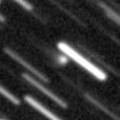
|
Now it is 15.8 mag (July 11, Ken-ichi Kadota). It stays observable at 16 mag for a long time from 2017 to 2018.
Date(TT) R.A. (2000) Decl. Delta r Elong. m1 Best Time(A, h)
July 22 2 44.55 30 51.7 4.657 4.442 71 15.8 5:33 (197, 22)
July 29 2 43.28 30 32.1 4.517 4.426 78 15.7 5:29 (191, 23)
|
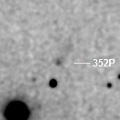
|
First return of a new periodic comet discovered in 2000. Now it is 17.8 mag (June 16, Kunihiro Shima). It will brighten rapidly, and it is expected to be observable at 15.5 mag in good condition from July to September.
Date(TT) R.A. (2000) Decl. Delta r Elong. m1 Best Time(A, h)
July 22 1 9.62 -11 7.1 2.063 2.549 106 15.8 5:11 (180, 66)
July 29 1 13.43 -10 34.3 1.995 2.556 112 15.8 4:47 (180, 65)
|
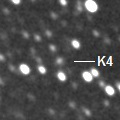
|
Now it is 15.8 mag (June 29, K. Hills). It stays 16 mag for a long time until summer in 2018. In the Southern Hemisphere, it stays observable in excellent condition until autumn. It locates low in the Northern Hemisphere.
Date(TT) R.A. (2000) Decl. Delta r Elong. m1 Best Time(A, h)
July 22 16 43.20 -34 18.3 2.349 3.137 133 15.8 20:42 (180, 89)
July 29 16 43.24 -33 29.2 2.381 3.101 127 15.8 20:15 (180, 88)
|
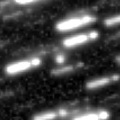
|
Now it is 16.6 mag (June 15, Ken-ichi Kadota). It was observed at 17 mag in 2016. In 2017, it will be observable at 15.5 mag in good condition from summer to autumn.
Date(TT) R.A. (2000) Decl. Delta r Elong. m1 Best Time(A, h)
July 22 1 31.49 11 35.6 2.575 2.829 93 15.9 5:33 (180, 43)
July 29 1 35.90 12 32.5 2.489 2.832 99 15.9 5:10 (180, 42)
|
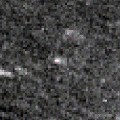
|
Now it is 19.1 mag (June 22, Erwin Schwab, Pablo Ruiz). Return of a new periodic comet which brightened up to 13 mag in 2004. It will be observable in excellent condition in autumn. It is expected to brighten up to 14 mag, if the comet is as bright as when it was discovered.
Date(TT) R.A. (2000) Decl. Delta r Elong. m1 Best Time(A, h)
July 22 1 30.75 -4 53.0 1.415 1.877 99 16.2 5:32 (180, 60)
July 29 1 42.65 -3 57.1 1.336 1.852 103 15.9 5:16 (180, 59)
|
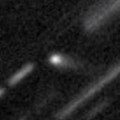
|
Now it is 17.0 mag (May 29, iTelescope Observatory, Siding Spring). It will brighten up to 14.5 mag in winter. In the Southern Hemisphere, it stays observable in excellent condition until spring in 2018. In the Northern Hemisphere, it stays unobservable until 2018.
Date(TT) R.A. (2000) Decl. Delta r Elong. m1 Best Time(A, h)
July 22 1 14.76 -71 9.4 2.225 2.787 113 16.2 5:15 ( 0, 54)
July 29 1 36.63 -72 50.9 2.185 2.733 112 16.1 5:09 ( 0, 52)
|
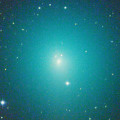
|
It approached to Earth down to 0.14 a.u. from late March to early April, and it brightened up to 6.0 mag (Apr. 7, Juan Jose Gonzalez). Now it is fading. It has already faded down to 12.1 mag (July 17, Thomas Lehmann). It stays observable in good condition after this until the comet fades out.
Date(TT) R.A. (2000) Decl. Delta r Elong. m1 Best Time(A, h)
July 22 18 10.20 -11 19.0 0.680 1.644 150 16.3 22:09 (180, 66)
July 29 18 12.10 -13 17.8 0.766 1.704 145 17.1 21:43 (180, 68)
|
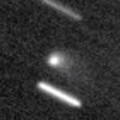
|
Now it is 16.8 mag (July 6, CAO, San Pedro de Atacama). It will brighten up to 15.5 mag in summer. It will be observable in excellent condition in the Southern Hemisphere. It will be getting higher gradually in the morning sky also in the Northern Hemisphere.
Date(TT) R.A. (2000) Decl. Delta r Elong. m1 Best Time(A, h)
July 22 21 55.26 -33 1.5 1.542 2.487 152 16.3 1:57 (180, 88)
July 29 21 48.67 -31 42.3 1.518 2.491 158 16.3 1:23 (180, 87)
|

|
Now it is 16.3 mag (July 7, Ken-ichi Kadota). It stays 16 mag from 2016 to 2017. In the Northern Hemisphere, it stays observable in good condition for a long time. In the Southern Hemisphere, it will never be observable again.
Date(TT) R.A. (2000) Decl. Delta r Elong. m1 Best Time(A, h)
July 22 18 7.39 66 7.2 6.336 6.429 90 16.4 22:05 (180,-11)
July 29 18 1.55 66 3.1 6.352 6.441 90 16.4 21:31 (180,-11)
|
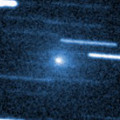
|
It brightened up to 11 mag from March to April. Now it is fading. It has faded down to 12.7 mag in late May (May 26, iTelescope Observatory, Siding Spring). No observations have been reported after that. In the Southern Hemisphere, it stays observable for a long time, but it stays low. It will be getting higher slowly also in the Northern Hemisphere, but it stays extremely low for a while.
Date(TT) R.A. (2000) Decl. Delta r Elong. m1 Best Time(A, h)
July 22 3 48.85 7 56.1 2.155 1.921 63 16.4 5:33 (224, 36)
July 29 3 57.95 7 42.1 2.168 2.010 67 16.7 5:29 (220, 38)
|

|
Now it is 19.7 mag (Apr. 27, iTelescope Observatory, Siding Spring). It will pass the perihelion on Oct. 27. In the Southern Hemisphere, it stays observable while the comet will be brightening, until early October when the comet will brighten up to 9 mag. In the Northern Hemisphere, it is not observable at all in this apparition.
Date(TT) R.A. (2000) Decl. Delta r Elong. m1 Best Time(A, h)
July 22 21 51.42 -74 49.9 1.285 2.033 123 16.9 1:55 ( 0, 50)
July 29 20 55.07 -79 8.5 1.224 1.938 119 16.6 0:35 ( 0, 46)
|
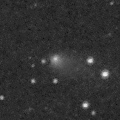
|
Hilda-type minor planet, but the cometary activity was detected on July 3. Now it is bright as 16.5 mag (July 3, G. J. Leonard).
Date(TT) R.A. (2000) Decl. Delta r Elong. m1 Best Time(A, h)
July 22 21 20.28 3 36.6 2.402 3.319 149 16.6 1:22 (180, 51)
July 29 21 16.21 3 14.0 2.385 3.336 155 16.6 0:51 (180, 52)
|

|
It brightened up to 11 mag from spring to summer in 2016. Now it is 17.4 mag (July 14, Ken-ichi Kadota). It stays observable for a long time after this, but it will be fainter than 18 mag in October.
Date(TT) R.A. (2000) Decl. Delta r Elong. m1 Best Time(A, h)
July 22 19 57.42 -19 13.9 2.344 3.359 177 16.6 0:00 (180, 74)
July 29 19 51.33 -19 35.9 2.390 3.395 170 16.7 23:22 (180, 75)
|
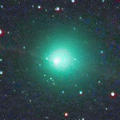
|
It brightened up to 7.2 mag in spring (Mar. 24, Marco Goiato). Now it is 16.9 mag (June 2, T. Ikemura, H. Sato). It will be fainter than 18 mag in late August. It is observable in good condition in the Southern Hemisphere. It locates low in the Northern Hemisphere.
Date(TT) R.A. (2000) Decl. Delta r Elong. m1 Best Time(A, h)
July 22 21 31.73 -24 37.0 1.189 2.170 159 16.9 1:34 (180, 79)
July 29 21 15.09 -25 23.1 1.235 2.239 168 16.8 0:50 (180, 80)
|

|
Now it is 18.4 mag (May 31, iTelescope Observatory, Siding Spring). It will brighten rapidly, up to 15 mag in autumn, and will be observable in good condition in the Northern Hemisphere. It locates low in the Southern Hemisphere.
Date(TT) R.A. (2000) Decl. Delta r Elong. m1 Best Time(A, h)
July 22 3 4.77 15 43.6 2.018 1.941 70 17.0 5:33 (207, 35)
July 29 3 19.39 17 16.4 1.947 1.929 73 16.8 5:29 (204, 34)
|
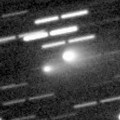
|
It brightened up to 11.5 mag from late March to early April (Mar. 24, Andrew Pearce). Now it is fading. It has already faded down to 17.8 mag (June 30, CAO, San Pedro de Atacama). Bright 12-mag new fragment BT was discovered on Feb. 10, but now it is faint as 18.9 mag (June 2, CAO, San Pedro de Atacama). It will be fainter than 18 mag in September.
Date(TT) R.A. (2000) Decl. Delta r Elong. m1 Best Time(A, h)
July 22 2 53.03 6 11.3 1.842 1.887 76 16.9 5:33 (209, 45)
July 29 3 0.06 6 31.8 1.822 1.950 81 17.1 5:29 (203, 46)
|

|
Now it is 17.6 mag (June 30, ATLAS-MLO, Mauna Loa). It brightens up to 16.5-17 mag in August, and it will be observable in good condition.
Date(TT) R.A. (2000) Decl. Delta r Elong. m1 Best Time(A, h)
July 22 15 40.89 -16 42.1 0.362 1.226 117 17.1 19:41 (180, 71)
July 29 16 3.30 -10 32.7 0.370 1.217 114 16.9 19:36 (180, 65)
|
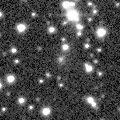
|
It will pass the perihelion in 2019. However, it has not been brightening since the discovery in 2010. It will be getting higher gradually in the morning sky in the Northern Hemisphere. It is not observable for a long time in the Southern Hemisphere.
Date(TT) R.A. (2000) Decl. Delta r Elong. m1 Best Time(A, h)
July 22 5 47.75 63 26.2 9.753 9.118 48 17.2 5:33 (205,-21)
July 29 5 55.29 63 53.2 9.688 9.103 52 17.2 5:29 (204,-20)
|
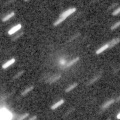
|
Now it is 16.7 mag (June 27, Hidetaka Sato). It will fade out after this, and it will be fainter than 18 mag in August.
Date(TT) R.A. (2000) Decl. Delta r Elong. m1 Best Time(A, h)
July 22 17 48.22 27 35.0 3.231 3.864 121 17.3 21:46 (180, 27)
July 29 17 45.84 27 25.9 3.311 3.900 118 17.4 21:17 (180, 28)
|
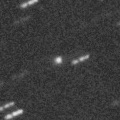
|
Now it is 17.2 mag (June 26, D. Briggs). It is expected to brighten up to 13-14 mag from 2018 to 2019. In the Northern Hemisphere, it stays observable in good condition for a long time. In the Southern Hemisphere, it is not observable until summer in 2018.
Date(TT) R.A. (2000) Decl. Delta r Elong. m1 Best Time(A, h)
July 22 20 33.24 70 42.1 5.780 5.848 88 17.5 0:35 (180,-16)
July 29 20 14.15 70 30.5 5.700 5.801 90 17.4 23:42 (180,-16)
|

|
Now it is 17.9 mag (June 2, MASTER-OAFA Observatory). It will brighten up to 14 mag from autumn to winter in 2018, and it will be observable in excellent condition in the Northern Hemisphere. In 2017, it is observable at 17 mag in excellent condition in the Southern Hemisphere.
Date(TT) R.A. (2000) Decl. Delta r Elong. m1 Best Time(A, h)
July 22 0 27.84 -42 14.5 3.719 4.334 121 17.5 4:29 ( 0, 83)
July 29 0 26.27 -42 56.8 3.621 4.293 125 17.4 4:00 ( 0, 82)
|
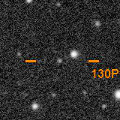
|
Now it is 17.9 mag (May 27, T. Ikemura, H. Sato). It will be brightening slowly until autumn when it becomes 16.5-17 mag. It will be getting lower gradually in the Northern Hemisphere.
Date(TT) R.A. (2000) Decl. Delta r Elong. m1 Best Time(A, h)
July 22 14 20.54 -12 58.0 1.995 2.361 97 17.5 18:39 (168, 68)
July 29 14 25.78 -13 42.0 2.047 2.329 92 17.5 18:43 (151, 66)
|
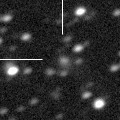
|
Now it is 17.5 mag (June 30, ATLAS-MLO, Mauna Loa). It is already unobservable in the Northern Hemisphere. It will be getting lower gradually after this also in the Southern Hemisphere, and it will be unobservable in September.
Date(TT) R.A. (2000) Decl. Delta r Elong. m1 Best Time(A, h)
July 22 12 51.92 -27 23.1 5.943 5.927 84 17.6 18:39 (101, 66)
July 29 12 55.63 -26 40.8 6.053 5.930 78 17.6 18:43 ( 96, 60)
|
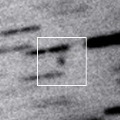
|
Now it is 18.3 mag (June 20, P. Camilleri, H. Williams). It stays observable at 18 mag from spring to summer. It is observable in excellent condition in the Southern Hemisphere. It locates low in the Northern Hemisphere.
Date(TT) R.A. (2000) Decl. Delta r Elong. m1 Best Time(A, h)
July 22 22 24.21 -34 15.3 4.637 5.511 146 17.7 2:26 (180, 89)
July 29 22 20.87 -34 17.3 4.621 5.534 151 17.8 1:55 (180, 89)
|

|
It stayed bright 12 mag for a long time from autum in 2015 to summer in 2016. Now it is fading. It has already faded dwon to 17.9 mag (July 3, ATLAS-HKO, Haleakala).
Date(TT) R.A. (2000) Decl. Delta r Elong. m1 Best Time(A, h)
July 22 15 56.07 -16 31.6 4.892 5.487 121 17.8 19:55 (180, 72)
July 29 15 53.69 -17 4.3 5.047 5.539 114 17.9 19:25 (180, 72)
|

|
Peculiar asteroid moving along a comet-like orbit. Now it is 18.0 mag (June 26, ATLAS-MLO, Mauna Loa). It is observable at 18 mag in good condition from July to August. It locates somewhat low in the Northern Hemisphere.
Date(TT) R.A. (2000) Decl. Delta r Elong. m1 Best Time(A, h)
July 22 21 32.58 -25 49.0 2.238 3.208 159 18.1 1:35 (180, 81)
July 29 21 21.20 -24 28.3 2.218 3.217 167 17.9 0:56 (180, 79)
|
|
![]()
 71P/Clark
71P/Clark 217P/LINEAR
217P/LINEAR C/2016 R2 ( PanSTARRS )
C/2016 R2 ( PanSTARRS ) 29P/Schwassmann-Wachmann 1
29P/Schwassmann-Wachmann 1 213P/Van Ness
213P/Van Ness C/2015 VL62 ( Lemmon-Yeung-PanSTARRS )
C/2015 VL62 ( Lemmon-Yeung-PanSTARRS ) 103P/Hartley 2
103P/Hartley 2 C/2016 N4 ( MASTER )
C/2016 N4 ( MASTER ) 65P/Gunn
65P/Gunn C/2015 O1 ( PanSTARRS )
C/2015 O1 ( PanSTARRS ) C/2016 M1 ( PanSTARRS )
C/2016 M1 ( PanSTARRS ) C/2016 N6 ( PanSTARRS )
C/2016 N6 ( PanSTARRS ) C/2011 KP36 ( Spacewatch )
C/2011 KP36 ( Spacewatch ) C/2015 V1 ( PanSTARRS )
C/2015 V1 ( PanSTARRS ) 352P/2017 L1 ( Skiff )
352P/2017 L1 ( Skiff ) C/2017 K4 ( ATLAS )
C/2017 K4 ( ATLAS ) 47P/Ashbrook-Jackson
47P/Ashbrook-Jackson P/2017 M2 ( LINEAR-NEAT )
P/2017 M2 ( LINEAR-NEAT ) C/2017 K6 ( Jacques )
C/2017 K6 ( Jacques ) 41P/Tuttle-Giacobini-Kresak
41P/Tuttle-Giacobini-Kresak C/2017 D2 ( Barros )
C/2017 D2 ( Barros ) C/2014 OE4 ( PanSTARRS )
C/2014 OE4 ( PanSTARRS ) C/2017 E1 ( Borisov )
C/2017 E1 ( Borisov ) 96P/Machholz 1
96P/Machholz 1 (457175) 2008 GO98
(457175) 2008 GO98 81P/Wild 2
81P/Wild 2 2P/Encke
2P/Encke 145P/Shoemaker-Levy 5
145P/Shoemaker-Levy 5 73P/Schwassmann-Wachmann 3
73P/Schwassmann-Wachmann 3 189P/NEAT
189P/NEAT C/2010 U3 ( Boattini )
C/2010 U3 ( Boattini ) C/2016 B1 ( NEOWISE )
C/2016 B1 ( NEOWISE ) C/2017 M4 ( ATLAS )
C/2017 M4 ( ATLAS ) (944) Hidalgo
(944) Hidalgo 130P/McNaught-Hughes
130P/McNaught-Hughes C/2017 E3 ( PanSTARRS )
C/2017 E3 ( PanSTARRS ) C/2015 H2 ( PanSTARRS )
C/2015 H2 ( PanSTARRS ) C/2014 W2 ( PanSTARRS )
C/2014 W2 ( PanSTARRS ) 2017 MZ4
2017 MZ4![]()


































